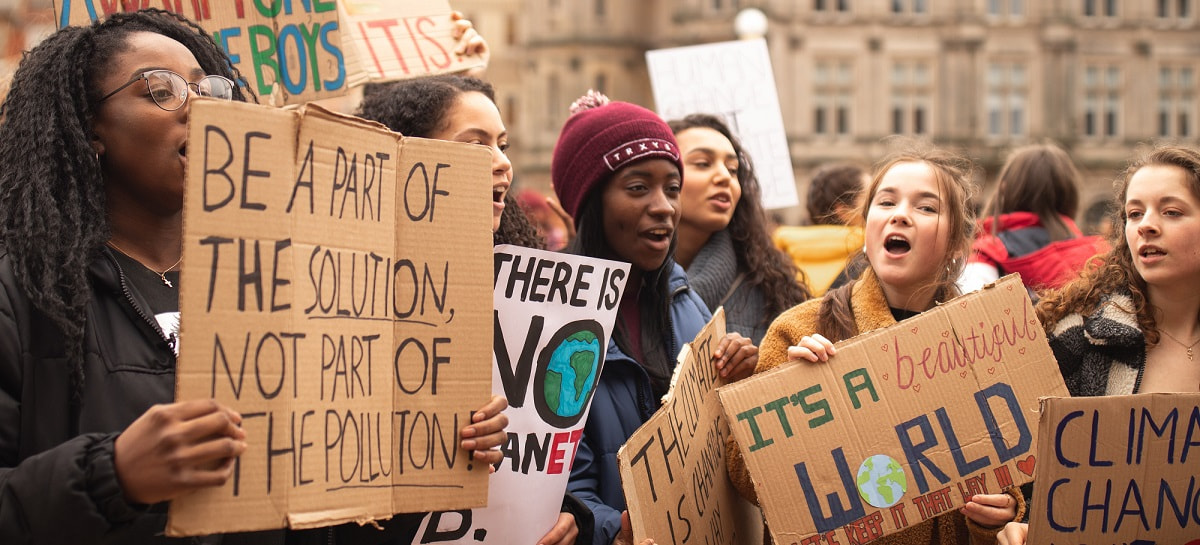The growing concern over climate change starts at the academic level. Since 2018, over 100 American universities have made commitments to climate resilience.
While climate change reversal feels impossible, these universities stand against adversity. The passion for our environment is stronger than ever before. The dedications of these universities produce climate innovations faster than ever before.
But, American schools aren’t the only ones dedicated to climate action. We’ve widened the scope to compile a list of the best universities to study climate change worldwide. If you’re ready to join the fight against climate change, look no further than this list.
We curated this list using specific criteria to determine how impactful each university is on the global climate scale.
These institutions think of everything from carbon reduction to university-wide climate action plans. They are working with students to benefit the climate, the environment, and to secure the future of our planet.
All this and more make these five the best climate action universities.

Need Support As You Navigate the College Scene?
Sign up to Goodwall!
- Connect with like-minded students from 150+ countries
- Search through more than $1.5 million in scholarships
- Ask your university questions and get support
Download the app now to get started for FREE!
1. University of Dundee
The University of Dundee is one of the best universities solving climate change. Ranked number one in the UK for its dedication to climate action, Dundee showcases a meticulous climate action plan. Among its many initiatives, the sustainable food policy stands out as its crowning achievement.
Sustainable food balances the impact of economic activity on our environment. As such, Dundee has defined sustainability and regulated food services on campus.
University of Dundee hospitality service is a fair trade recognized organization. They operate campus catering and three campus cafes. The university enforces sustainable food guidelines to reduce paper, plastic, and food waste. Such guidelines include:
- Food sourcing must contribute to the welfare of local economies and livelihoods
- Food suppliers must protect the welfare of farmed and wild plant and animal species
- Food suppliers must reduce damage and waste produced by sourcing, processing, and packaging food
Some examples of these guidelines in action are using fair trade coffee, food portion control, and removing palm oil from campus menus.
Campus menus also include a variety of vegan and vegetarian options. Plant-based foods give off fewer carbon emissions and need less water to produce. These offerings help Dundee reduce their carbon footprint while giving students healthy options.
Even Dundee’s cutlery and dishware fight back at climate change. All coffee cups, paper plates, and napkins are compostable. Moreover, all their plastic comes from recycled materials, is reusable, and is re-recyclable!
Furthermore, the University of Dundee established an Environmental Task Group. This group meets at regular intervals to assess the progress and needs of the university. For example, they move to put new initiatives in place and assess best practices.
Related Read: Online Volunteering: How and Where to Volunteer Virtually (7+ Ideas!)
2. University of British Columbia
The University of British Columbia has created a campus-wide climate action plan that rivals the efforts of comparable institutions.
Their three-part plan implemented back in 2007 has already reached its first goal. By 2020, they reduced GHG emissions by 33% despite an increase in size and student body. Their next goal, set in 2050, is 100% GHG emission reduction.
One of the programs helping them reach their goal is their state-of-the-art bioenergy facility. In 2017 alone, this facility converted 8,800 tons of wood waste into energy. This clean energy produced over 25% of the campus’ thermal production.
In the last decade, they replaced their near century-old steam energy system. This change achieved 10,600 tons of carbon dioxide reduction. On its own, this initiative reduced its GHG emissions by 20%.
The University of British Columbia doesn’t stop fighting for climate change there. They are also eager to involve their students in their climate initiatives.
The University of British Columbia is becoming a waste reduction powerhouse. Since implementing the zero waste action plan, they composted 976 tons of waste. They also got 20 student volunteers and engaged with over 12,000 waste-reduction event attendees.
3. University of Tasmania
In 2021, the University of Tasmania received recognition for its climate initiatives in the Sustainable Campus Index.
Among these is the Climate Justice Network. Established in 2017, the CJN seeks to “explore issues of ethics, justice, and law in responses to climate change.”
This network brings together researchers and students across a variety of disciplines. When they meet, they discuss climate change and inform local policies.
Currently, the Climate Justice Network focuses on investing in the future generation. They do so by taking their experiences and concerns into account when discussing climate change policy.
The University of Tasmania created a comprehensive energy action initiative. This plan will impact its current and future operations. Currently, they rank seventh for clean energy and 13th for climate action. But, we cannot ignore their achievements and commitments.
Tasmania was the second university to receive the Australian carbon neutral certification. They look forward to maintaining that standing and improving their emission standards.
One initiative geared toward carbon dioxide reduction is their traffic program. This program ensures the minimization of greenhouse gas emissions during travel planning. They even included residual emissions from air travel in this plan as well.
Most importantly, as the campus updates and expands, so will its climate action. The university looks toward Environmental Sustainable Design in its construction planning.
They will follow those guidelines for all new and refurbished facilities. This pledge will reduce carbon emissions and energy consumption for years to come.
Related Read: A Student’s Guide to Promoting Gender Equality in Education (HS & Uni)
4. Vrije Universiteit Amsterdam
Vrije Universiteit Amsterdam (the “Free University of Amsterdam” in English) has a variety of projects geared toward positive climate action, particularly their Institute for Environmental Studies (IVM).
Established in 1971, this research institute has since grown its staff to 100+ employees. They’ve received top scores in scientific excellence, and accept over 150 students each year. It even hosts around 50 Ph.D. students every year.
The IVM’s primary focus is on low-probability, high-risk disasters that climate change may create. One such issue is the risk of mass floods caused by melting polar ice caps. The IVM is working on plans to mitigate flood damage and save lives in that scenario.
To this end, the IVM researches many variables that can lead to flooding situations. This includes studying the development of flood risks. They do this by tracking the sea level and other related causes. The IVM also looks toward the economic toll of flood risks and how that impacts individual behaviors.
Another major issue that the IVM is tackling is climate mortality. Experts predict a negative impact on human health from the rising temperatures brought on by the greenhouse effect. When humans cannot adapt to the rising temperatures, death tolls may rise. The IVM aims to contribute to research that predicts the mortality rates in such a situation and the economic impact of that result.
But Vrije Universiteit Amsterdam is not only looking toward the future. They are implementing projects that help assess the climate threat right now. Like the climate mortality study, they are researching how climate impacts mortality rates today.
This program helps improve our insights on meteorological causes of mortality. It also assessed subgroups that are more vulnerable to such phenomena.
Also, the IVM studies the current economic impact of climate mortality in the Netherlands. This data helps inform them to prepare for low-probability, high-risk events.
5. Indian Institute of Technology Kharagpur
Indian Institue of Technology Kharagpur is taking strides toward climate action. In 2017, they established their Centre of Excellence in Climate Change Studies. This centre makes IIT one of the best universities to study climate change.
Since it opened, the establishment has taken between 30 and 35 Ph.D. students every year. These students research the impact of pollutants in water, land, and the atmosphere.
At the oceanic level, climate change has affected more than just rising sea levels. The researchers at the CECCS noted unusual wave patterns occurring in some parts of the ocean.
This becomes an issue when the longer waves affect more local waves and increase the erosion of land. Paired with rising sea levels, the rate at which seaside cities fall into the ocean will rise.
Moreover, CECCS researchers are studying ocean acidification. Unbalanced acid levels in the ocean may destroy thousands of ecosystems. Such imbalance is liable to have severe consequences on land animals and even humans.
The CECCS also took note of an increase in extreme meteorological events. These events are signs that our climate is changing. Unusually large amounts of cloudbursts and cyclones are threatening land ecosystems.
With this in mind, the CECCS researches:
- Changes in weather activity
- Ocean acidity
- Thunderstorm patterns
- Coastal processes
- Extreme water levels
By tracking these events, they learn the rate and scale at which meteorological events rise. This information helps with many projects.
First, they can use the data for risk assessment. Then, they can use that analysis to inform initiatives that help save lives.
Related Read: Point Source Pollution & Nonpoint Source Pollution (Definition, Examples)
Take Climate Action With Goodwall
As climate initiatives take hold, more universities worldwide will follow the path that these five are paving right now. Students and educators alike should take note of their achievements. If you want to learn from the best, these are the standards to turn to.
Don’t wait to stay up to date on the best universities to study climate change. Sign up today for a Goodwall account to get all the latest news in education, career, social, and more.



